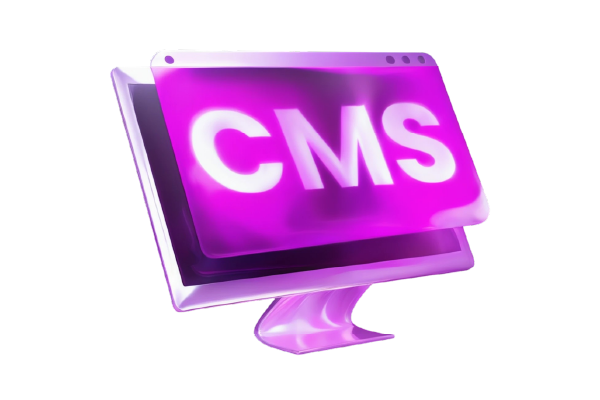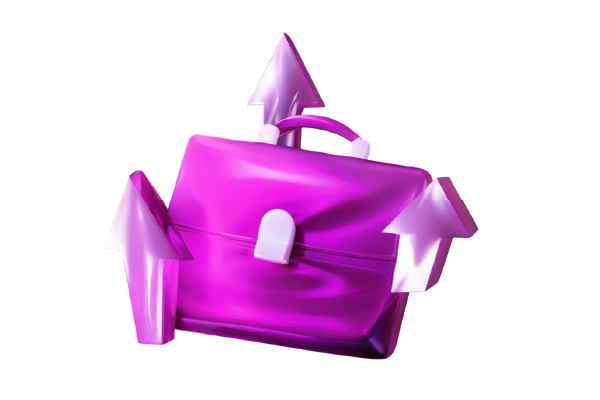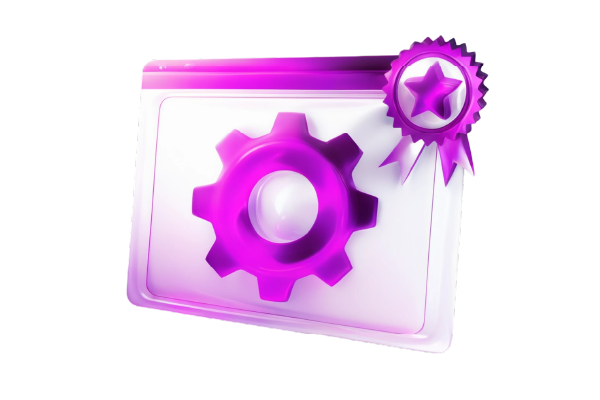If you’ve ever seen a website, such as a blog, online store, or school website, you’ll notice that they’re all built and managed using the same system. This system is known as a Content Management System (CMS). A content management system (CMS) is a tool that allows people to create and manage website content without requiring coding skills. A CMS allows you to easily write articles, edit photos, and add pages.
Before CMSs, building a website was difficult. Every time the content needed to be changed, users had to write HTML code and upload it to a server. However, with CMSs such as WordPress, Joomla, and Wix, anyone can quickly create a website without having to be a programmer. CMSs have made the digital world more accessible to all.
What Is a Content Management System?
 Simply put, a Content Management System (CMS) is software that allows you to edit, organize, and publish content to the internet. A CMS allows you to write articles, add images, and create new pages without needing to write complex code such as HTML or CSS.
Simply put, a Content Management System (CMS) is software that allows you to edit, organize, and publish content to the internet. A CMS allows you to write articles, add images, and create new pages without needing to write complex code such as HTML or CSS.
A CMS consists of two major components. First, there’s the CMA (Content Management Application), which allows you to write and edit website content. Second, the CDA (Content Delivery Application) is the system that shows your writing to website visitors. So, simply type in the CMA, and the CDA will display it beautifully on the website page.
A CMS is useful because it allows users to concentrate on the content of a website rather than the technical aspects. For example, if you want to start a blog about your hobby of drawing, a CMS allows you to simply choose a theme, add photos, and then post articles without the need for coding.
Furthermore, a CMS promotes teamwork. Multiple people can log in to the same website and perform different tasks, such as writing articles, designing pages, or managing security. Everything can be done in one place.
Content Management System vs. Website Builder
People sometimes confuse the difference between a CMS and a website builder. Both can be used to create websites, but there are important differences. A CMS gives you more freedom and allows for deeper customization. Website builders are simpler and better suited for beginners who want quick results.
With a CMS like WordPress, you need your own hosting and domain. However, you can customize the appearance, add features, and even write code if you want. Meanwhile, website builders like Wix or Squarespace provide everything, including a domain, hosting, and templates, in one package.
Read More: What Is Rank Tracking? A Complete Guide to SEO Keyword Rankings
Website builders are suitable for people who want to create a website quickly without technical hassle. However, a CMS is better for those who want more creative freedom and want to build a website that can grow in the future.
Why Acknowledging CMS Matters for Your Business
 If you own a business, a CMS can be extremely useful. A content management system stores and organizes all of your company’s content, such as products, articles, and promotions, in one place. As a result, you won’t have to manually manage everything.
If you own a business, a CMS can be extremely useful. A content management system stores and organizes all of your company’s content, such as products, articles, and promotions, in one place. As a result, you won’t have to manually manage everything.
A CMS also ensures data security and easy access for the entire team. Assume you have an online store. A CMS allows you to add products, set prices, and view sales reports right from the dashboard. This enables you to concentrate on business strategy rather than website technical issues.
What to Consider Before Choosing the Right CMS
There are several things you need to consider before making a decision to use the CMS as a tool for your business.
Functionality
Before choosing a CMS, consider what functionality you need. Do you want to sell products online? Create a personal blog? Or a school website? Each CMS has its own advantages. For example, Shopify is suitable for online stores, while WordPress is great for blogs or news sites.
Basic functions like writing articles, adding images, and creating pages are available in all CMSs. However, if you need additional features like a store, forum, or members’ space, choose a CMS that offers plugins or additional applications.
Customizability
A good CMS should be adaptable to your requirements. This means you can change the design, add features, and personalize the appearance to your liking. WordPress and Webflow, for example, are extremely flexible and offer thousands of themes and plugins to choose from.
If you’re a beginner, you can get started with a pre-made template. However, if you know a little coding, you can change the website structure to suit your own needs. This allows the CMS to grow in tandem with your business.
Security
Security is extremely important in the online world. A secure CMS safeguards your website against hackers, viruses, and data breaches. Webflow and Shopify, for example, already offer SSL, automatic backups, and a two-factor authentication system.
However, some CMSs, such as WordPress, provide more flexibility, requiring you to install security plugins. This means you can select either a simple but closed system or a free system that requires your own security.
User Registration
Some CMSs allow you to set up a login system for users. For example, suppose you want to build a school website where students can log in and read course materials. A CMS allows you to create user accounts with various roles, such as administrator, editor, or regular member.
This feature is also useful if you are starting an online community. You have control over who can write articles, who can only read, and who can edit content.
Content Management
The primary function of a CMS is, of course, content management. A good content management system (CMS) simplifies content creation, editing, and organization. You can create categories, tag articles, and schedule them for automatic publication.
This feature allows you to manage hundreds of articles without confusion. Everything is neatly organized in a dashboard that is easily accessible at any time.
Theme System
A CMS usually includes a variety of themes or templates to help your website look good. Themes allow you to change your website’s colors, fonts, and layout with a few clicks.
A CMS such as WordPress provides thousands of free and paid themes. You can choose a theme that is appropriate for your needs, such as a blog, online store, or art portfolio.
SEO Tools
SEO, or Search Engine Optimization, is critical for your website’s visibility on Google. Many CMSs include built-in SEO features like automatic meta description settings, URL settings, and sitemaps.
Some CMSs even include additional plugins, such as Yoast SEO (for WordPress), that assist you in writing SEO-friendly articles. This allows you to get more visitors without having to learn Google’s complex algorithms.
Pricing
Each CMS has a different cost. Some are free but require hosting and a domain name, such as WordPress and Joomla. There are also paid options, such as Webflow and Shopify, which include hosting and security.
Read More: Search Engine Basics: How Google Search Works for Beginners
You must choose based on your requirements and abilities. If you are just getting started, a free CMS will suffice. For business, however, opt for a paid CMS that provides greater stability and prompt technical support.
7 Best Content Management Systems
 Here are the most notable CMSs in the business field, and we’ll go over them one by one.
Here are the most notable CMSs in the business field, and we’ll go over them one by one.
1. WordPress
WordPress is the most popular content management system (CMS) worldwide. WordPress powers approximately 64% of websites that use a CMS. This platform first appeared in 2003 and has since become a popular choice due to its free and simple use.
WordPress allows you to create blogs, online stores, portfolios, and even forums. You simply need to purchase a domain and hosting, and then install it. There are numerous online guides to help beginners get started.
Features: WordPress offers thousands of free themes and plugins that you can use. These plugins function as additional applications, such as security, SEO, or online stores.
You can also grant different permissions to each user, such as author, editor, or administrator. This makes collaboration easier.
Purposes: WordPress is appropriate for everyone, from students and writers to entrepreneurs. Many people use WordPress for personal blogs, small online stores, and news websites.
Pros:
- Free and easy to use
- Lots of themes and plugins
- Large and active community
- Can be developed for many types of websites
Cons:
- Must install your own security plugin
- Requires paid hosting and a domain
- Can be slow if you have too many plugins
- Premium themes are usually paid
2. Joomla
Joomla is a free and open-source content management system (CMS) similar to WordPress but geared toward intermediate users. Joomla includes a powerful system for creating websites with multiple languages and users.
Features: The dashboard allows you to add various functions such as articles, banners, menus, and SEO settings. Joomla also accepts logins via Gmail and OpenID.
Purposes: Joomla is great for organizations or businesses that need a large website with lots of pages and users.
Pros:
- Free and flexible
- Multi-language support
- Suitable for large websites
- Active community
Cons:
- Beginners will face a steep learning curve
- Must manage your own hosting
- Slightly more rigid design than WordPress
- Takes longer to configure
3. Drupal
Drupal is also an open-source, highly adaptable CMS. Many large organizations, including Tesla and UNICEF, use Drupal. This CMS is better suited for web developers because it can be customized right down to the database structure.
Features: Drupal modules (similar to plugins) can add functionality to forums, blogs, and user profiles.
Purposes: Drupal is best suited for large websites with high security and complex data structures.
Pros:
- Very flexible
- Safe and fast
- Free
- Large community
Cons:
- Not suitable for beginners
- More complicated installation
- Coding knowledge required
- Limited design with no additional themes
4. Wix
Wix is originally a website builder with easy-to-use cloud-based CMS tools. You can create a website using a drag-and-drop system without coding.
Features: Wix has hundreds of templates and built-in features like email marketing, galleries, and online stores.
Purposes: Wix is suitable for students, artists, and small businesses who want a fast and attractive website.
Pros:
- Easy to use
- Lots of attractive templates
- Free plan available
- Hosting included
Cons:
- Limited features in the free plan
- Can’t switch hosting plans
- Lack of flexibility
- Some premium features are expensive
5. Shopify
Shopify is a CMS specifically for e-commerce. You can create a complete online store with a payment system, inventory, and sales reporting.
Features: Everything is included, such as hosting, security, and store design. You can also add additional apps like live chat and email marketing.
Purposes: Suitable for small businesses or brick-and-mortar stores looking to sell online.
Pros:
- Easy to use
- Secure
- Fast customer support
- Many online store apps
Cons:
- Not free
- Less design flexibility
- Full features are only available in higher-priced plans
- Additional fees on sales
6. Magento
Magento, now part of Adobe, is a major e-commerce CMS. It comes in two versions: Magento Open Source (free) and Adobe Commerce (paid versions start at $20,000).
Features: Magento can accommodate thousands of products and visitors. It also offers high security features, fast speeds, and thousands of add-ons.
Purposes: Used by major brands like Nike and Coca-Cola, it’s perfect for large businesses with many products.
Pros:
- Extremely powerful and fast
- Secure
- Many e-commerce features
- Fully customizable
Cons:
- Expensive for the paid version
- Requires an expert developer
- Complicated installation
- Not suitable for beginners
7.Webflow
Webflow is a modern CMS that combines advanced design and functionality. You can create a professional-looking website without coding.
Features: Webflow provides a drag-and-drop builder, fast hosting, free SSL, and premium templates.
Purposes: Suitable for designers and agencies who want a professional-looking and interactive website.
Pros:
- Free and modern design
- Fast and secure hosting
- Many templates
- Suitable for professional designers
Cons:
- Relatively expensive
- A bit difficult to learn initially
- Not suitable for complete beginners
- Some features are locked on higher plans
Conclusion
A Content Management System (CMS) allows anyone to create a website without having to be tech-savvy. From the adaptable WordPress to the powerful Shopify for online stores, each CMS has its own set of benefits and uses.
Choose a content management system that meets your specific requirements. WordPress is an excellent choice for starting your own personal blog. If you want to start an online store, Shopify and Magento are good options. However, if you want a distinctive and professional appearance, Webflow is a contemporary option. A CMS enables you to create your own digital world in a simple, secure, and enjoyable manner.
Kamila Putri is a content strategist and digital marketing expert who helps brands craft messages that resonate and drive results. With a strong foundation in SEO, brand voice, and data-driven strategy, she has produced content that performs, whether it's optimized web copy, lead-generating campaigns, or conversion-focused messaging. At Buzz Pink, she applies this expertise to help clients grow through smart, search-focused digital strategies that engage, inform, and convert.


